Plan your Anhui tour? Abutting Jiangsu on the east, Zhejiang on the southeast, Jiangxi on the south and Hebei and Hunan on the west, Anhui is a low-profile province in the east region of China with Hefei as its capital city.
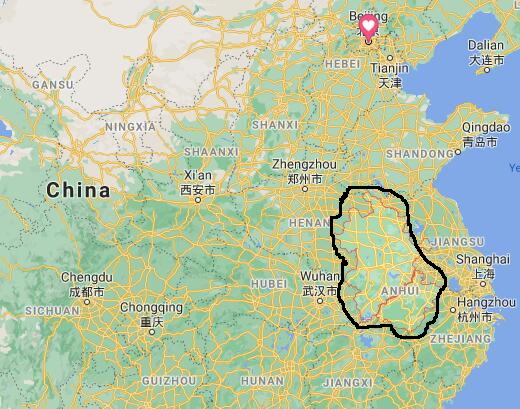
The Yangtze River and Huai River cross Anhui Province from the west to the east, geographically bisecting the province into two parts – the northern Anhui ( north of Yangtze River ) and the southern Anhui (south of Yangtze ).
Topographically the northern Anhui is part of the North China Plain and part of the Huai River Watershed as well, both flat and densely populated while the southern Anhui features rugged hills and ranges winding through the southeastern Anhui.
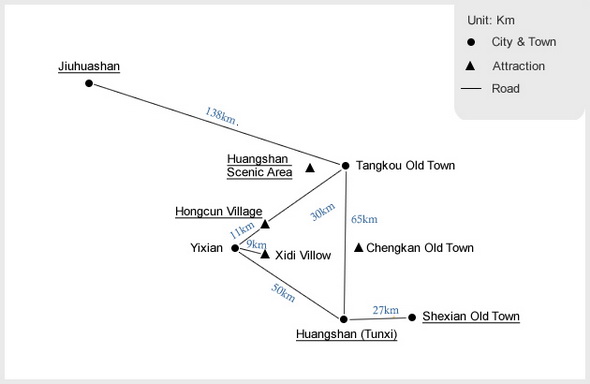
Anhui’s cultural and historical sights are mainly scattered in the south and southeast regions, represented by the Huizhou-type villages, white-washed walls and back-tiled roofs, and the mountainscapes of Huangshan.
150 km southwest of Huangshan, Jiuhushan is noted for its unworldliness and tranquility. Anhui’s green mountains and the bucolic life in the countrysides are a great escape from the hustle and bustle of China’s bigger cities.
I’ve rounded up the 7 top attractions in Anhui for your perusal while planning your own trip to Anhui.
1. Mount Huangshan 黄山
Mt. Mountain is world famous for its beautiful landscape – sunrise, sunset, granite peaks, pine trees, and the other-worldly sea of the clouds. Also much of Mt. Huangshan’s reputation comes from its significant impact on Chinese art, literature and profound cultural resources.
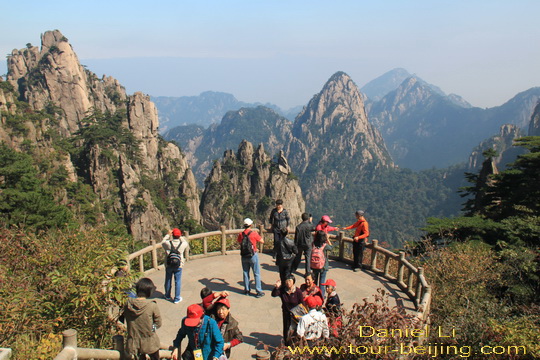
The World Heritage Committee of UNESCO put Mt. Huangshan on the list of World Natural and Cultural Heritage in 1990. Mount Huangshan was named the “sister mountain” of Jungfrau in the Swiss Alps. See Top 10 Attractions in Huangshan.
2. Tunxi Old Street 屯溪老街
Tunxi is the old town, the city core of Huangshan which is named after Mount Huangshan. The attractions in Tunxi include Laojie (Old Street), a souvenir street lined with wooden shops and Ming-style Huizhou buildings.
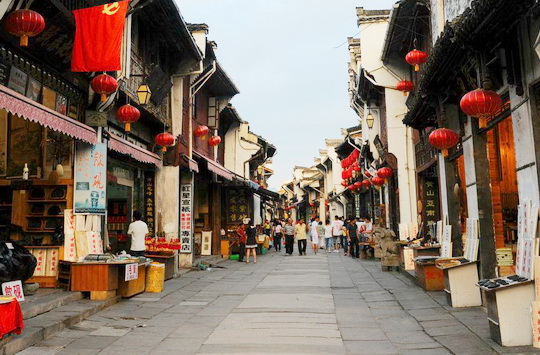
Wancuilou on the Laojie offers an in-depth look at Huizhou architecture, furniture and antiques. Duck into the side alleys for a glimpse of the bona fide slice of the local life.
3. Hongcun Village 宏村
Hongcun Village is located at the foot of the southwest side of Mt. Huangshan, only 11kms away from Yixian town, 60km west of Tunxi, Huangshan.
The whole village is like a buffalo lying on its side surrounded by green hills and blue water with dwelling houses its “body”, South Lake its “belly”, Moon Pool its “stomach”, Leigang Hill the “head”, two huge trees the “horns”, a winding stream as the “intestines” and the four bridges as the “four feet”.
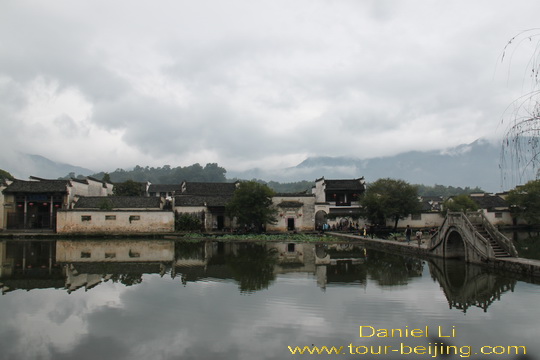
Hongcun Village is typical of Huizhou Dwellings, one of the vernacular dwellings in China, which are adapted to the characters of hills and waters there. Hongcun Village was added to the list of the World Cultural Heritage by UNESCO in late 2000.
4. Xidi Village 西递村
Located 18 km south of Hingcun Village, Xidi Village is also part of the World Cultural Heritage along with Hongcun Village.
It is the perfect place for visitors to see typical folk houses, where residents have lived as they have for centuries. It gives visitors the rare opportunity to explore China’s ancient culture and arts.
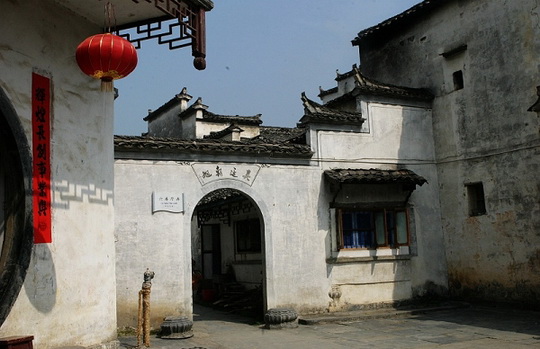
Wandering along this ancient village, you will find traditional Hui-style houses, ancestral temples, academies of classical learning, stone archways, white walls and grey tiles, beautifully painted windows, projecting horse-head walls, and stone slab bridges.
4. Chengkan Town 呈坎镇
Chengkan Town is located about 30 km north of Tunxi, the center of Huangshan City and at the south base of Mount Huangshan.
Chengkan is a tranquil and bucolic place different from the busy and crowded Shen County or the Hui-type villages in the west – Hongcun Village and Xidi Village. Here in Chengkan, you are able to get a glimpse of an authentic piece of countryside life.
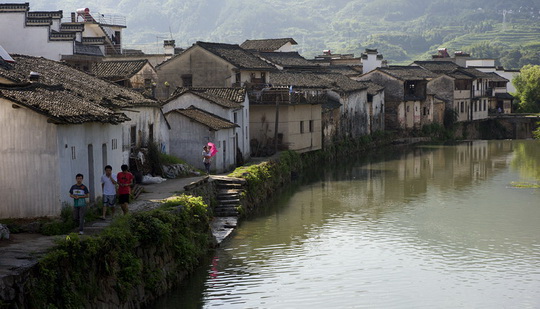
Ringed by lush mountains and cut through by placid rivers, Chengkan has over 100 well-preserved buildings of Ming and Qing Dynasty that feature various styles – pavilions, terraces, towers, bridges, wells, ancestral halls and residential buildings.
These buildings epitomize the Huizhou dwellings, one of the vernacular dwellings in China, which are adapted to the characters of hills and waters.
Jiuhuashan 九华山
Approximately 150 northwest of Huangshan, Jiuhuashan, known as “Mount Jiuhua” in English, is famed for its landscape and temples. It is one of the four sacred Buddhist mountains in China.It is the earthly abode of the Bodhisattva Dizang Kshitigarbha ( Guardian of the Underworld). The other three sacred mountains are Putuoshan, Wutaishan and Emeishan.
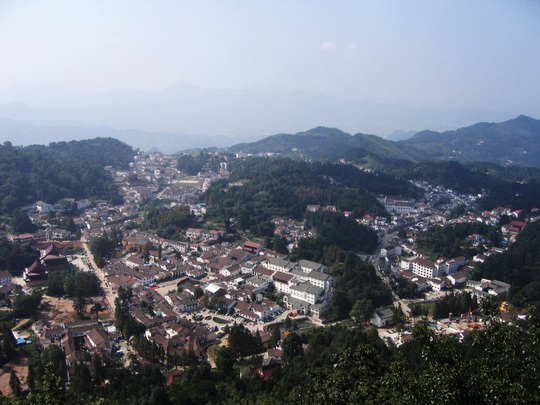
Jiuhuashan literally means “Nine Lotus Flower Peaks” named after the nine tallest peaks of the 99 peaks in Jiuhuashan area. Jiuhuashan’s Buddhism boomed during the reign of Emperor Xuanzong in Tang Dynasty.
Today there are still over 90 temples well preserved with 9 temples crowned as National Key temples. There are 600 monks and nuns living in these temples. See Top 10 Attractions in Jiuhuashan.
6. Mount Qiyun (Qiyunshan) 齐云山
Mount Qiyun is located about 33 km to the northwest of Huangshan City, about 40 minutes’ drive from Tunxi .
It is noted as one of the Four Sacred Mountains of Taoism, home to numerous temples and monasteries.
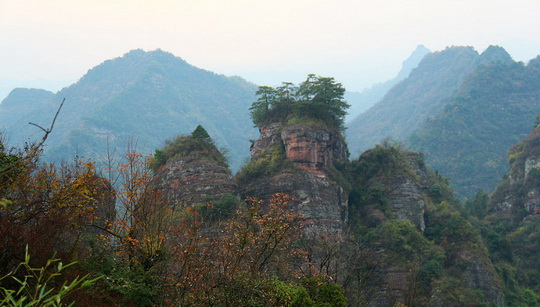
There are some hiking trails with stunning views and the highest point of the mountain rises to 585 meters. A charming village – Qiyun Village is perched in the middle of the mountain range. Some white-washed houses are dotted on the slope with a range of eateries and restaurants and stalls for souvenirs and local products.
7. Shexian Old Town (She County ) 歙县老城
There are some hiking trails with stunning views and the highest point of the mountain rises to 585 meters. A charming village – Qiyun Village is perched in the middle of the mountain range.
Some white-washed houses are dotted on the slope with a range of eateries and restaurants and stalls for souvenirs and local products.
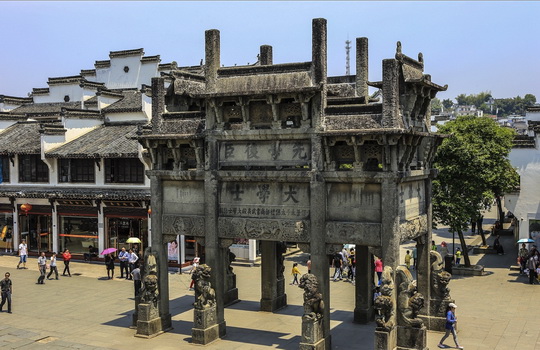
She County is representative of Hui Culture, the cradle of Peiking Opera. Shexian County (She County) is the original area of Hui merchants. She County is the main production area for the Ink and ink stone, the two treasures of the four treasures of the study.
She County is also nicknamed “the county of Paifang”. Paifang is also called “pailou’, a traditional Chinese architectural archway.
Add-on:
Anhui Tour
Huangshan Tour
Top 10 Attractions in Huangshan
Top 10 Attractions in Jiuhuashan
Huangshan Travel Blog
Top 7 Attractions in Anhui
Hassle-free Anhui and China Guided Tours
If you don’t want to go the do-it-yourself route and prefer the hassle-free escorted tours, here are some options for China guided tours:
China Private Tours
China Small Group Tours
China City Tours
China Train Tour
China Yangtze Cruise Tour
China Silk Road Tour
Further Readings
Top 10 Places to Visit in China
10 Fascinating Facts about China
Top 10 Most Essential Things to Pack for China
Plugs and Sockets in China
China Tour Packages
Learning Useful Chinese Phrases for Travellers
How to Recognise Chinese Currency
Top 10 Travel Experiences in China
10 Most Scenic Drives in China
Top 10 Most Beautiful Mountains in China
Top 10 Most Beautiful Lakes in China
Top 10 Most Beautiful Grasslands in China
Top 10 Most Beautiful Rivers in China
Top 10 most beautiful waterfalls in China
Top 10 Places to See Autumn Leaves in China
Top 10 Most Beautiful Villages in China
Top 10 Most Beautiful old towns in China
Top 10 Most Beautiful Museums in China
Top 10 China Tourist Scams
Top 10 Souvenirs in China
Any questions, just drop a line.





